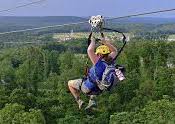
Outdoors enthusiasts are best advised to wait until July 4 or later for long camping-out adventures unless they want to end up resembling human pincushions.ĪUTUMN: Fall is to Maine what the Grand Canyon is to the Southwest: It's one of the great natural spectacles of the place. While this is especially true inland, it applies along the coastline and on islands as well. Travelers should come prepared for some.Īlso be aware that early summer brings out black flies and mosquitoes in multitudes, a state of affairs that has ruined many a camping and hiking trip. On average, about 1 day in 3 will bring at least a little rain. Rain is rarely far away-some days it's an afternoon thunderstorm, sometimes it's a steady drizzle that brings a 4-day soaking. (Northeasters bring wind and storms, though these are rare in summer.) These systems tend to alternate during summer, with the heat arriving stealthily and slowly, then getting exiled by stiff, cool winds a few days later.Īlong the immediate coast it's often warmest in the late morning sea breezes typically kick up around lunchtime, pushing temperatures back down for the rest of the afternoons. Northwesterly winds bring cool weather and knife-sharp vistas. Southerly winds bring haze, heat, humidity, fog (thick fogs occasionally linger for days), and even thunderstorms. Maine's coastal weather is largely determined by whatever breezes are prevailing. (In Portland it tops 90☏/32☌ only 4 or 5 days a year, on average.) This should be no surprise: Summers are exquisite, in spite of the occasional stretches of fog or rain.

Expect to pay premium prices at hotels and restaurants along the coast in midseason. Vast crowds surge up the Maine coast during and between the two holiday weekends, swelling traffic on the turnpike and Route 1, and causing countless motels and inns to hang “No Vacancy” signs. SUMMER: The peak summer season runs from July 4th to Labor Day (although increasingly, businesses report that summer traffic lasts solidly until the end of September). In fact, the ever-shifting seasons make Maine distinctive, and with one exception, the seasons are well defined. There's a kernel of truth in this, but it's also probably a ploy to keep outsiders from moving here. Our highly trained MHA Staff Guides are well prepared to navigate your crew in the backcountry and to interpret the historical and natural wonders of the northern Maine woods.The well-worn joke about the climate in coastal Maine is that it has just two seasons: winter and August.


PEACEFUL SCENERY OF MAINE HIGH ADVENTURE BASE FREE
And Maine has a colorful past filled with the lore and tales of lumberjacks – like those who scrambled over felled trees as they careened down the river and blasted log-jams free by tossing dynamite into the jumble of logs. Maine has an intriguing history, including: the Native American tribes that navigated these waterways for centuries in birchbark canoes the mid-19th century wilderness journey of Henry David Thoreau as described in his book The Maine Woods, and nearly four centuries of logging history that dates back to Colonial times when tall Maine pines were used as masts for British Navy ships. The 4+ million acres of northern Maine woods and waterways offer a variety of fascinating environments – enormous lakes carved by glaciers, whitewater churning in rocky rivers, craggy peaks reaching skyward, endless conifer and hardwood forests, moose, bald eagles, abundant wildlife and an array of colorful wildflowers.


 0 kommentar(er)
0 kommentar(er)
